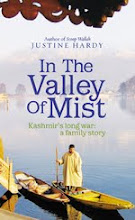In an interior village in rural Tamil Nadu, a large house had been converted into a vocational school to teach welding to teenage boys. We were visiting the school which was run by an NGO. The students attended a 4 week course, and if the boys passed a professional welding test at the end of the duration, they were guaranteed employment by auto manufacturers nearby.
We were talking to the principal and he repeatedly stressed that the school admits only those who are BPL (Below the Poverty Line, an economic term that gets used often by the media in India.) He was telling us that the boys came from the poorest of the poor families. They couldn't afford to pay the fees for the welding course. Therefore, from the salaries that the boys earned in the first six months, a percentage was deducted and sent back to the NGO to cover its training expenses. This way, the NGO was trying to become financially self-sustaining.
The principal told us that because this was the first time in their lives for the boys to be away from their families for weeks at a stretch they got very homesick.
"How do these boys keep in touch with their families?" I asked.
"By cell phone. They all have mobile phones"
Then he noticed my questioning look. "Yes, they are all BPL. But these days even the BPL boys have mobile phones. They use it for SMS," he said.
That evening, on our return our vehicle came on the Bangalore-Chennai Highway. It is an impressive tolled freeway with 2-3 lanes on each side. At the toll booths, you get receipts with a computerized time and date stamp. Just as we were driving past the toll booth, I noticed one man sitting in a folding chair with a notebook and pen in hand. As each vehicle passed him, he was frantically jotting something down. From what I could make out, he was jotting down the license plate number of each vehicle.
I then saw that this was happening in all the lanes, each lane had a man with a notebook. I have no idea why they were noting it down, and that too by hand. They could have used a simple surveillance camera, or even a digital camera or they could have at least keyed it in somewhere. In their way, the records wouldn’t even be searchable. But they were at it diligently, all day long. (Since that visit, I have also seen this furious jotting down in other toll booths in TN as well.)
Just another reminder that India will never cease to surprise me. People living below the poverty line who have cell phones for SMS; and fancy automated toll booths where employees also jot down license plate numbers by hand.
What I learned from my Volunteering attemtpts
12 years ago




 Ram
Ram




